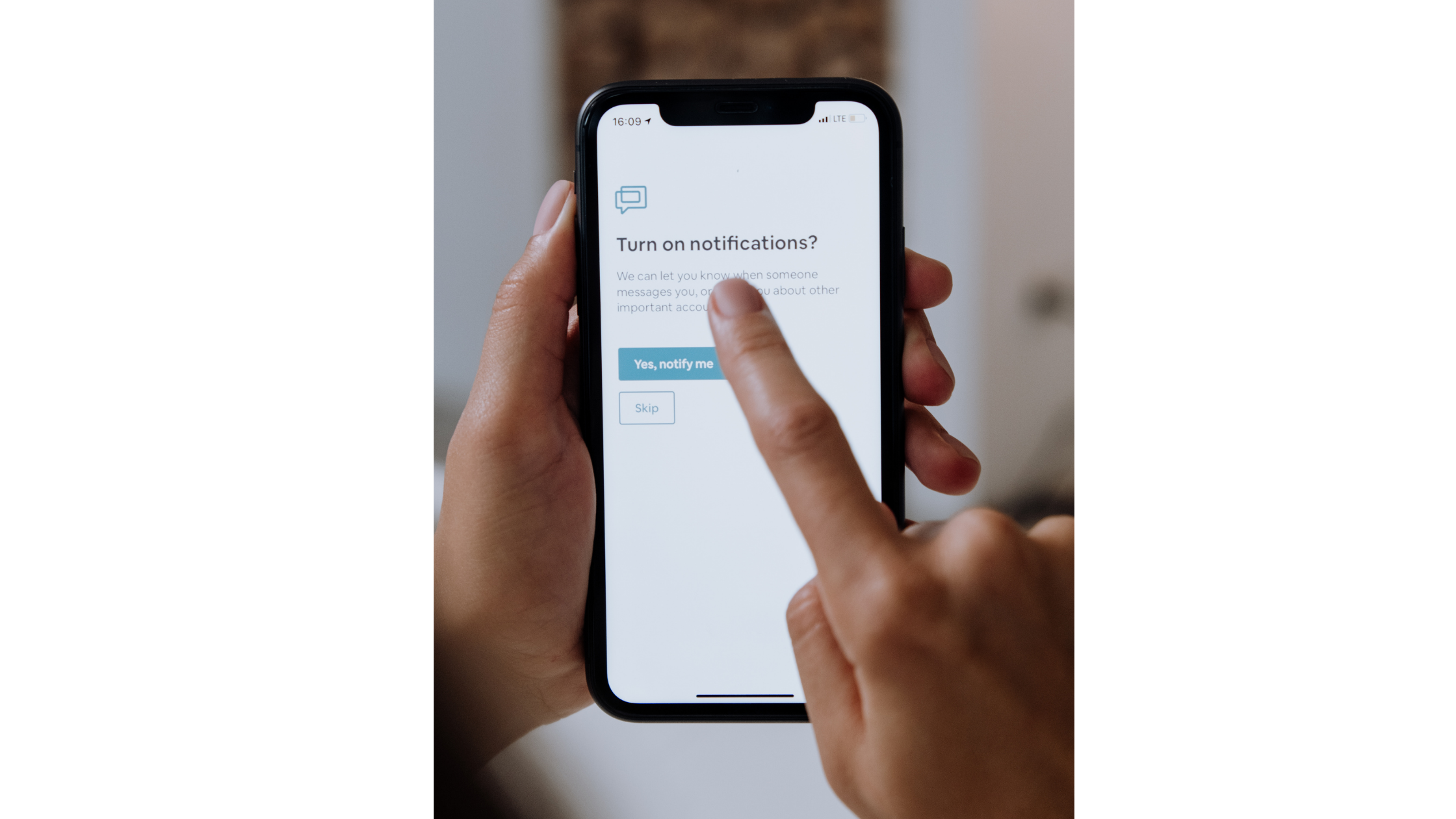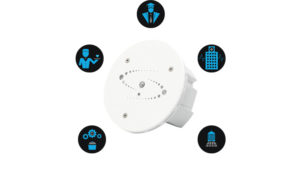Mass Emergency Notification Systems
Everything you need to know in a complete guide on Commercial Mass Emergency Notification Systems
When seconds matter, an emergency mass notification solution is critical to an effective response. In this complete guide, we have covered all the information that Chicago area businesses and governments need to keep people safe, secure, informed, and connected.
Umbrella Security Systems can help your Chicagoland business plan for emergencies. There is a wide variety of software and hardware solutions available on the market, and Umbrella Security Systems can help you choose the right mass notification system to protect your Illinois business.
JUMP TO A SPECIFIC CHAPTER
Chapter 1:

What is a mass notification system?
An emergency notification system allows businesses to send messages to a large group of people in a short time. It is one way messaging and generally sent during any emergency to alert an affected group of people. Mass emergency notification systems communicate through various channels such as texts, push notifications and emails.
Many Chicago area organizations effectively utilize this service, including fire, police, local governments, and large businesses. After an incident occurs, a company has to figure out its severity and its potential impact and then communicate with employees, staff, management, and everyone within the organization. Today, its utility is now expanding to various corporate businesses, management companies, manufacturing facilities, logistics and warehouse companies, offices, and more. Any size business in Chicagoland can implement an emergency communications plan. It is vital if there are multiple locations and if the business manufactures any hazardous materials or is in a high-risk industry.
To operate a mass notification system effectively, the system requires a database of people within the organization. A mass emergency notification system database often contains names, addresses, email addresses, and phone numbers. Systems can be in-house programmed devices or managed services. Users can access the system through a phone or the internet, launch the notification process, and remotely manage successive activities.

Chapter 2:

Who needs Emergency Notification Systems?
Mass emergency notification systems are not just for the government. All types of Chicago area organizations need to be able to communicate effectively and quickly when something critical occurs.
According to a report by the Business Continuity Institute, more than 50 percent of large organizations use emergency management software to reach their employees during crisis times.
Emergency notification systems are necessary for Illinois schools, technology-focused industries, healthcare facilities, shipping and logistics companies, financial institutions, businesses, and other organizations that require a unified communication platform. These commercial mass notification systems must be flexible and offer various messaging options to meet the needs of each institution.
Business applications for emergency notification and messaging systems
Commercial mass notification and messaging systems help to ensure workplace health and safety in Illinois. It provides a solution to safeguard your business against uncertain conditions such as environmental challenges, technical issues, health hazards, and dangerous situations.
Commercial mass emergency notification systems go beyond handling emergencies. Your Chicago area business’s day-to-day operations can tremendously benefit from a unified communication system. Organizations can send out secure notifications and efficiently manage operations. Processes like scheduling shifts and managing field techs are streamlined across channels. A commercial mass emergency notification system is a tool for immediate action in the case of an emergency situation. By providing a means for rapid information exposure, businesses can ensure that no employee is left out. Notifications can include but are not limited to:
- IT Outages
- Security Threats
- Natural Disasters
- Weather-Related Info
- Hazardous Materials Events
- Suspicious Person Alerts
- Employee Scheduling
- Any Activity or Event That Requires Immediate Notification

Governments use mobile alert systems
Governments routinely use mass notification systems to keep residents in specific geographic areas informed and safe. A commercial mobile alert system (CMAS) is a mass alert network that broadcasts emergency alerts such as tornado warnings to mobile devices such as cell phones and pagers based on the subscriber’s geographical location. Authorized local or national government officials send alerts related to public safety to CMAS. CMAS validates the notification, authorizes the sender, and broadcasts the message to the wireless carriers in the affected geographical location.
The first mass emergency notification system for the United States was launched in 2006 and was previously referred to as Wireless Emergency Alerts. The U.K. and many other countries now use mass emergency notifications today as well. The current national US government emergency notification system, called IPAWS (Integrated Public Alert & Warning System), is operated by FEMA. But, each state and local authority has the option to create and implement a notification service that replaces or compliments the IPAWS mass emergency notification system for government. These additional notification systems can be customized by Umbrella Security Systems to help local governments keep their residents safe and more informed.
Chapter 3:

When to use a mass notification system?
Chicago based organizations can send secure notifications and efficiently manage employee workflows. Notifications can include:

Weather and Natural Disaster
Weather alerts are the most common use of mass notification systems. Every year some kind of natural disasters such as tornadoes, hurricanes, floods, or fire touches a large portion of the country including Chicagoland. The government uses weather triggered notifications to inform all the people living in a different part of the city, town, or village of the alarming situations approaching to evacuate from the area or take safety measures. This notification also allows people to ready their supplies and also make necessary adjustments or arrangements.
- Fire emergencies
- Hazardous materials events

Power and IT Outages
A shortage of power or internet outage can ruin the productivity of an individual or business. That is why mass notifications are used to inform the people regarding a problem to take immediate action. This is crucial for those Chicago based businesses who are in constant need of power, such as patients who are on ventilation, ticket booking counters, video surveillance systems, and systems dependent on electricity for water supply.

Active Shooters, Lockdowns, & Suspicious Persons
Sometimes criminal or terrorist activity can put people and businesses at risk. Mass emergency notification systems in Chicago can be vital in a person who wishes to harm people or a specific place. If security personnel identifies a threat, the system can inform people to evacuate, hide, and remain updated in active threat situations. Mass emergency systems can notify and declare lockdown conditions. A notification can also be triggered by an access control system, a panic alarm button, or automated by silent alarm triggers.

Non-Emergency Uses (logistics/scheduling/coordination)
- Open doors
- Employee Scheduling
- Cybersecurity breaches
Chapter 4:

How To Use Mass Emergency Notifications
There are numerous ways that mass emergency notification systems can alert and notify individuals in the system. Below are the most common alert notification methods:
SMS Text Messages
Mobile phone users often have their phones on them at all points in the day. Many emergency systems use this to their advantage to send a text message to users enrolled in the database.
Push Notifications
An innovative strategy that is widely used for mass emergency notifications is push notifications. Push notifications can be triggered even when a specific app is not in use. These enable the various organizations to trigger an alert on devices that are registered in the alert system.
Emails
Many governments and corporations widely use electronic mail or E-mail for mass emergency notifications.
Automated Phone Calls
Automated phone calls have been used at a higher rate to alert individuals of longer messages that can’t be easily communicated in a single message.
Digital Signage
Digital signs are a vital part of a mass emergency notification system when alerts are restricted to a specific location. We live in a modern era where everything is in a state of constant change, and new innovative ideas are used to reach people’s attention in a specific physical area.
Mass Notification based on Geolocation
Sometimes it is essential to deliver messages to individuals in a specific location or building in real-time. As a result, many Chicago based mass emergency notification systems use geolocation modifiers to help send notifications to individuals in a particular area.
Physical addresses stored in a database can be selected, and then the system can send a notification based on the user location. This is generally done by importing or drawing a specific area on a digital map to identify the selected regions. Google maps and other mapping tools are often integrated to make the process easier.
Umbrella Security Systems has the experience, knowledge, and capability to guide you in the right direction so that you are prepared if and when emergencies arise. Reach out to us to plan and build your commercial mass emergency notification system or for a system that is designed for government use for anywhere in Illinois.
Chapter 5:

Essential features of mass emergency notification systems
There are very many features to evaluate to ensure that a mass emergency notification system performs as intended, reaching most people at the fastest rate.
Speed
Is any feature as integral as speed when considering emergency alerts? When seconds can determine the difference between life and death, you’ll need a system that will act quickly before it sends out thousands of messages in less than a minute. The more clicks and steps, the longer your employees must wait to receive possibly life-saving information, warnings, and instructions.
Multi-Channel Notification Delivery
Each of your employees probably has their preferred communication devices method that they use most. If your notification system only targets one or two channels, you might miss out on a significant number of employees that could be in harm’s way. The software must enable you to select multiple channels of communication to include in your alerts.
Message Customization Per Channel
Communication channels have a lot to offer. However, so do the kinds of messages that are best suited for the channels. Think of an email; for example, it has the flexibility to contain lengthy instructions, links, attachments, and images. On the other hand, push notifications are generally only made up of brief statements of a few words. It is essential to tailor your messages to fit the channels you are sending them through.

Audience Grouping
If your business has multiple locations, traveling employees, a dispersed workforce, or remote workers, you’ll need an emergency notification system that will allow you to segment your target audience.To be sure that only the right people are receiving the right messages, you’ll want to group your audience. Not only does “audience grouping” ensure that the right audience will receive the proper notifications; it also erases unnecessary messages from being transmitted across the system. The more unnecessary or irrelevant messages people receive, the more likely they are to ignore them, diminishing the messages’ quality.
Mobile Applications for Android and IOS
Probably the most significant advantage of modern alert systems is that they are most likely built with mobile technology at the center of the conversation. Users should use the most updated version of IOS and Android devices to receive their push notifications, text messages, posts, voicemails, emails, and any custom application your company may use. Emergency notification apps should allow your administrators to create messages, sending notifications to potentially thousands of people with just a couple of taps on the phone.
Easy-To-Use Experience
When time is of the essence, the less complicated your mass emergency notification system, the faster and more accurately you can send the critical message or warning. The software should be so perceived that little training is required. The fewer steps, practice, and tutorials required, the more effectively your system will run.

Audience Interaction
One-way messaging works for some of the situations and that’s exactly how the federal Emergency Alert System works: you need to get the message out at the right place and the job done. In many situations, though, it’s beneficial to engage employees and give them the chance to respond either with comments, questions, photos, or videos. Employers in the middle of a situation unfolding can provide proper feedback to assist first responders and other employees.
Integrations
To simplify implementation and continued use, integrating the mass emergency notification system with existing systems like HR directories is an absolute must. Integration like these will automate processes like populating employee contact fields. These integrations can save vital time to reach every employee on their channel preference and help segment the audience.
Reporting and Analytics
IT investments deserve reporting to gauge effectiveness. Emergency notification system software should be no different. It isn’t enough to purchase one and implement it. You need to be aware of it doing what it’d promised, reaching the intended audience reliably and quickly with the right messaging. And how are those recipients reacting? Vendors vary in the analytics they provide; however, the primary metrics should include analytics, statistics, read receipts, survey results, performance by channel, and replies to ensure you a coordinated audience.

Enterprise Security
Enterprise should always be at the forefront of your mind for your business. A mass emergency notification system will save messages, and user data often intended only for an internal audience. Additionally, organizations globally must consider international private data laws and how personal data such as a cell phone number is stored and delivered country lines. For your risk to be reduced or eliminated, an emergency alert system should provide protocols to protect your information. All of your data should be encrypted both at rest and in transit. The vendor should also maintain industry-standard application security, measurement, and monitoring protocols to protect your business.
Cloud or On-Premise Solutions
Cloud solutions have greater flexibility, cost-effectiveness, and access from anywhere using any device, Wherelse an on-premise solution is wholly dependent on in-house servers. The first and oldest is “on-premise,” which essentially means that the hardware and software that run the system are gathered in a physical location managed by your organization. The other method is known as “cloud”, simply meaning that hardware is stored in an off-site location managed by pros in a secured data area. Cloud solutions are generally much easier to manage, more cost-effective, and accessed anywhere where there is an internet connection. Unlike off-premise solutions, cloud solutions typically don’t require your business to upgrade/manage their servers actively.
Chapter 6:

Is a Mass Notification System Right For My Business?
Any change in a safety and security program requires careful consideration. An emergency notification system isn’t any different. It’s important to consider more than simply the emergency notification system’s cost and reviews.
Before investing money into a solution, consider these four factors:
Organizational Assessment
Every business is different. Each individual has unique needs. Consider these questions to determine what kind of solution you may need:
☑ How dispersed is our workforce?
☑ How many locations does my business have?
☑ What internal systems, if any, should be integrated?
☑ What communication channels are used most frequently?
☑ How well are our current communications delivered to and received by employees?
☑ What processes could this solution automate?
☑ Would our business benefit from a cloud-based solution?
Cultural Assessment
How your employees work and communicate is a significant factor in determining which solution is correct for your business. Consider these questions to gauge how well and what kind of system will be best received:
☑ How successful have previous alerts, warnings, and internal communications been received?
☑ What kind of training would be required to be sure that each employee is comfortable with the system?
☑ How many employees do we have?
☑ Where do our employees work?
Current Assessment of Capabilities
Before you know what you need, you should know what you already have. Consider the following to determine what should stay and what needs improvement:
☑ How long does it take to activate the system?
☑ What mass communication system do we currently use?
☑ How many channels do our messages utilize?
☑ How quickly can messages be developed and sent?
☑ Can we quickly and easily segment our employee population?
☑ Does our system allow for one-way or two-way communication?
Threat Assessment
Where your Chicago area facilities and employees are located directly influences the type of emergencies that are most likely to occur. Determine the following to understand the kind of messages that will be most common and how they can be delivered best:
☑ What environmental threats or hazards does each location face?
☑ Where are our employees located?
☑ What is our business plan, and how will continuity play a part?
☑ How and when will we practice our emergency plan?
☑ What sort of security and IT support do we have in place?
Our Technology – Umbrella Security Systems
High-level technologies include:
Video Surveillance, Access Control, High-Definition Cameras, Cyber Security, Mass Emergency Notification Systems and much more.
The safety and security of your business are a top priority. Having a commercial access control system is essential to protecting your staff, property, and company information. In this complete guide, you will learn how to make informed decisions about your access control system and how to secure your business.
Video surveillance systems are more important than ever in today’s business environment. All businesses – large or small – need an effective system to protect their assets and remain profitable. According to the United States’ National Crime Victimization Survey, billions of dollars are lost every year to robbery, theft, and burglary.
Security camera systems may be the most powerful tool in protecting your business. Through proper implementation, business security cameras can deter crime, improve situational awareness, and even identify areas for improvement in business operations.
Umbrella Security Systems can help you plan for emergencies. There is a wide variety of software and hardware solutions available on the market, and Umbrella Security Systems can help you choose the right mass notification system to protect your business.
Every business participating in today’s globally digital landscape understands that threats to their network infrastructure is part of the price of doing business. Public and private businesses in various sectors stay vigilant in blocking cybercriminals from gaining access to network infrastructure.
The IoT smart sensor is a security monitoring device that detects threats in sound, light or air. The complex sensor solution is solving major health and safety problems within a compact mechanical design with no recurring software expenses.
Frequently Asked Questions
What is an emergency notification system and how does it work?
An emergency notification system instantly alerts individuals of threats like fire, lockdowns, or severe weather. Whether it’s a school alert system or a commercial setup, it delivers messages via SMS, email, loudspeakers, or apps, ensuring everyone receives critical updates in real time to stay safe.
Why do schools need a dedicated alert system?
A school alert system enhances campus safety by allowing staff to quickly notify students and parents of emergencies. It streamlines communication during crises like lockdowns, weather threats, or evacuations, ensuring accurate, timely alerts across all channels to prevent confusion and protect lives.
How can emergency notification systems support businesses?
Businesses benefit from an emergeny notification solution that alerts staff about intrusions, fire, or other safety threats. It’s a key part of commercial security solutions, integrating with alarms, video surveillance, and access control to keep employees safe and reduce response times during critical situations.
Can emergency notifications integrate with existing security systems?
Yes. An advanced emergency notification solution can integrate seamlessly with your current commercial security solutions, including surveillance cameras, access control, and fire alarms. This unified system improves situational awareness and allows for faster, automated emergency alerts across multiple platforms.
What features should I look for in a school emergency system?
A reliable school alert system should include mass text alerts, intercom integration, location tracking, and panic button support. These features ensure that faculty and students receive fast, coordinated instructions. Integration with broader emergency notification solutions enhances school-wide preparedness and real-time response.
Umbrella Security Systems has the experience, knowledge, and capability to design a commercial mass emergency system so that when an emergency arises your business and your people will be safe and secure.






